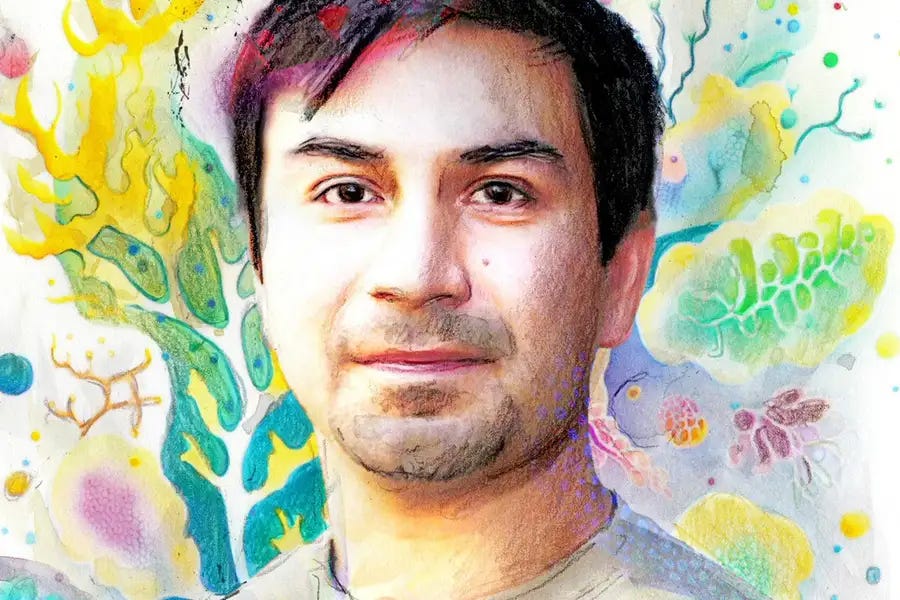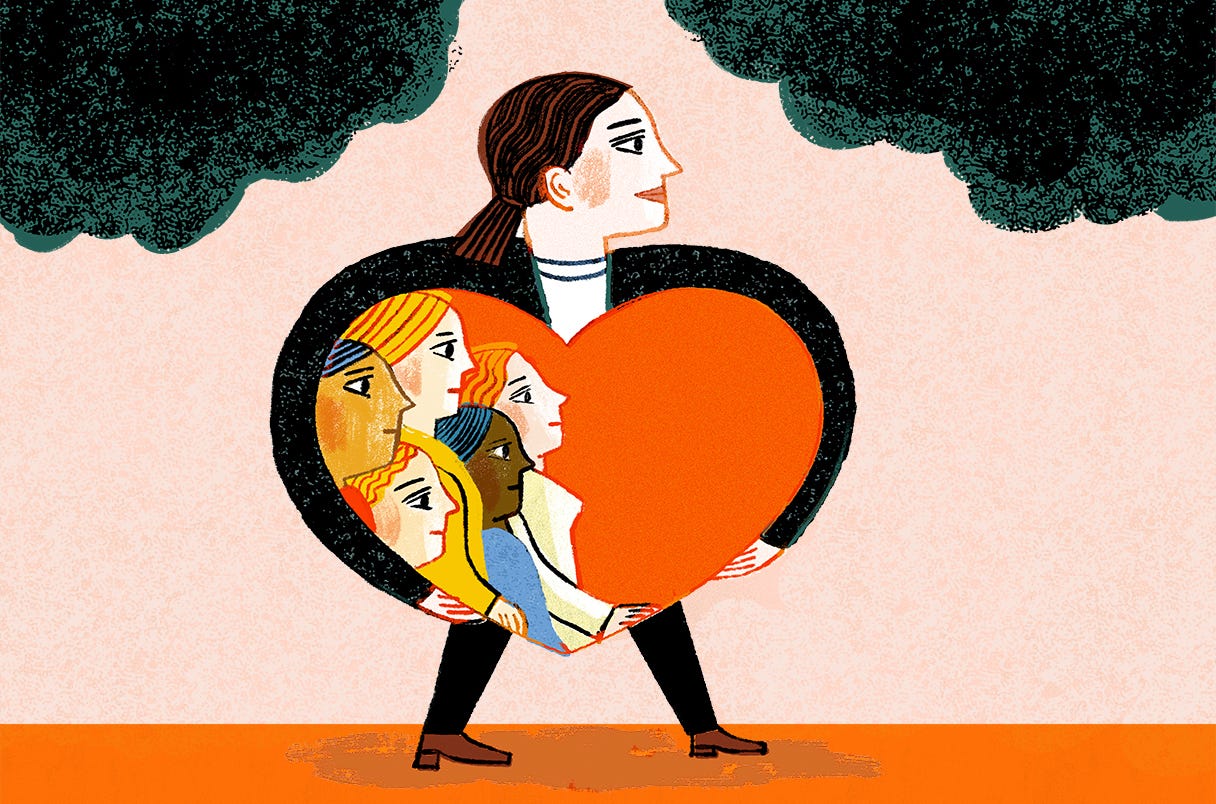Sci-Ed Update 260
Transgender women in sports, embryo development in miscarriages, a real zombie fungal infection?, the diverse Amazon-dweller microbiome, weight-loss drugs, and more stories!
TAPP Update
Being our usual transparent selves, we need to tell you that The A&P Professor website is still offline as of this writing, which is one of several factors holding up the release of Episode 135 of the TAPP podcast. The crew is still working on it and we hope to have things running better soon!
In the meantime, you can still listen to episodes and review the shownotes (with links) wherever you usually listen to audio. Here are four places online you can find our TAPP Radio episodes:
To listen to the current episode, click the player above (if visible) or go to one of the podcast sites listed in this section.
World Athletics banned transgender women from competing. Does science support the rule?
Some researchers say decision is discriminatory and not based on evidence
RENO SAKTI DEVISSANDY/ISTOCK.COM ADAPTED BY C. SMITH/SCIENCE
World Athletics (WA), the governing body for track and field and other running competitions, announced last month that transgender women who went through male puberty can no longer compete in women’s events at international competitions. The policy took effect on 31 March.
WA also ruled that to compete as a woman, athletes with differences of sexual development (DSD), who have congenital conditions that cause atypical sex development, must have a testosterone level below 2.5 nanomoles per liter (nmol/L) for at least 24 months before an international competition.
WA said its rules prioritized fairness and “integrity of female competition.” The organization’s president, Sebastian Coe, said, “We will be guided in this by the science around physical performance and male advantage which will inevitably develop over the coming years.”
But Joanna Harper, a Ph.D. student at Loughborough University who studies transgender athletes’ performance, questions whether the WA fully considered the scientific evidence. “I was disappointed with the decision,” says Harper, who is transgender. “The idea that it was necessary to ban trans women to protect the female category seems so far-fetched.”
She says the new rules discriminate against trans athletes and will likely hinder research on transgender women’s athletic performance.
ScienceInsider examined some of the key issues [in the article linked below].
Kevin Patton comment→ In the HAPS Book Club we have recently been reading and discussing a book on this topic… Sporting Gender: The History, Science, and Stories of Transgender and Intersex Athletes
Read more→ AandP.info/gyk
Embryo Development Delayed in Pregnancies Ending in Miscarriage
Researchers stress the importance of embryonic health
3D ultrasounds of an embryo at 8, 9.5 and 10 weeks of gestation.
Embryonic morphological development is delayed in live pregnancies ending in miscarriage, according to a prospective cohort study from the Netherlands.
Among over 600 singleton pregnancies, those ending in a miscarriage were associated with a lower Carnegie stage -- which categorizes embryonic maturity based on physical features -- compared with an ongoing pregnancy (β -0.824, 95% CI -1.190 to -0.458, P<0.001), reported Melek Rousian, PhD, of Erasmus University Medical Center in Rotterdam, and colleagues.
In addition, a live embryo of a pregnancy ending in a miscarriage will reach the final Carnegie stage with a delay of 4 days versus an ongoing pregnancy, they noted in Human Reproduction.
A delay in Carnegie stage increased the odds of a miscarriage by 1.5% per delayed Carnegie stage (OR 1.015, 95% CI 1.002-1.028, P=0.028).
"In the first trimester, so much happens and growth differences can already originate, which will have an impact not only on the fetus, but also on the neonate, on the child, and on the infant," Rousian told MedPage Today. "We really need to let embryonic health into our lives as clinicians and to focus on this very important period in life where a lot happens within the embryo."
Read more→ AandP.info/qjj
My Amazon family’s gut microbes may help us fight inflammatory disease
The Yanomami people of the Amazon have the world’s most diverse gut microbiome – and David Good, who is half Yanomami, thinks it might hold the clues to better health
Nabil NEZZAR
THE Yanomami people, based in the Amazon rainforest of southern Venezuela and northern Brazil, are one of the last Indigenous groups in the region that still live by hunter-gathering and small-scale farming. They also have the most diverse gut microbiome of any human community studied so far.
David Good is half Yanomami: his mother is a member of the Irokai-teri community and his father is from the US, where Good was brought up. After a life-changing reunion with his mother in the Amazon as an adult, Good is now doing a PhD in microbiology at the University of Guelph in Ontario, Canada. His research involves studying the Yanomami’s unusual microbiomes – the bacteria, viruses and fungi that live on and in our bodies – with a view to developing new therapies for microbiome-associated conditions.
Here, he tells New Scientist about his work with the Yanomami, from collecting stool samples from family members and gaining first-hand experience of their diverse diet – and why he will never eat armadillo again – to what we can learn from studying their microbiomes.
Read more→ AandP.info/1m3
Why we fall for wellness, even when the science says it doesn't work
The wellness industry tells us we can be healthier and more productive through quick fixes and supplements. Author Colleen Derkatch investigated why, even when we know it sounds too good to be true, wellness can be irresistible
“We learn that to be good people and to be good citizens, we need to constantly be working on ourselves.” Getty Images
From at-home stool tests to foot baths claiming to draw impurities from the body, the wellness industry is big business, worth $1.5 trillion and counting. As it has grown, so too have concerns that people are taking unproven therapies to treat serious medical conditions. Just this month, the US Food and Drug Administration recalled Natural Solutions Foundation’s “Nano Silver 10ppm dietary supplement” over its label’s “unsubstantiated health claims to prevent, treat, or cure COVID-19”.
Colleen Derkatch, whose research at Toronto Metropolitan University in Canada focuses on the rhetoric of science, medicine and health, has noticed a rise in unsubstantiated claims and celebrity hype in the unregulated wellness industry, whose products promise to increase energy, reduce stress, slow the ageing process and more. Rather than expose the claims, however, she wanted to find out why people are drawn to wellness therapies in the first place.
In her latest book, Why Wellness Sells, Derkatch held in-depth interviews with 40 people who use supplements and other wellness therapies in their day-to-day lives. She also analysed the arguments and language used by members of online communities centred around “natural” healing. She found that the allure of the wellness industry has far less to do with individual gullibility and far more to do with societal failings.
Read more→ AandP.info/cgh
FUNGUS LEARNS TO INFECT HUMAN, SPREADING "ROOT-LIKE FILAMENTS"
THIS SURE SOUNDS A LOT LIKE "THE LAST OF US."
In what appears to be the first-ever recorded case of its kind, a fungus that usually infects plants has infected a human host, putting root-like filaments into his body.
A 61-year-old mycologist in India contracted a severe case of silver leaf disease — a fungus that can prove fatal for a huge variety of plants — in his throat, ScienceAlert reports.
In other words, it sounds a lot like the opening episodes of HBO's hit TV series "The Last of Us."
There are only a few fungi capable of infecting humans, like ringworm or athlete's foot, but experts have long warned that due to fungi's ability to evolve rapidly, that picture could soon change. Fungal pathogens can quickly become immune to antifungals or even force the immune system to turn against itself, meaning the threat could be significant.
In a new article published in the journal Medical Mycology Case Reports, researchers detail the case of the Indian mycologist, who they claim is the first reported case of the human infection of the plant fungus Chondrostereum purpureum.
Kevin Patton comment→ oh-oh!
Read more→ AandP.info/yqr
Professors, we can—and should—prioritize compassion with our students
I have learned to value my students’ growth and learning over others’ perceptions.
Some of my colleagues perceive me as being “too close” to the students and think my class is not rigorous enough. In the past, I worried such impressions would affect my chance for promotion and advancement. But I have learned to value my students’ growth and learning over others’ perceptions.
A fellow professor recently asked me, “If this works so well, why didn’t you do it sooner?” All I can say is that vulnerability is really hard. It involves sharing of yourself as fully as you are able, including admitting wrongdoing and acknowledging that you can’t always be your best self. Far from being a sign of weakness, it requires a ton of strength.
Exposing your imperfections, connecting with students on a deeper level, and creating space for them—and you— to grow will always be challenging, but it is worth it. I cannot know everything that is going on in every student’s life, but I can always choose compassion.
Kevin Patton comment→ Do your prioritize compassion? Yeah, that’s my goal, too. In this article by Jessica Larsen, we see that we are not alone!
Read more→ AandP.info/kl1
Ozempic is about to be old news
In some ways, semaglutide hardly represents a major advance in science. Diet drugs are nothing new, and even the category of drugs that these new products belong to, called “GLP-1 agonists,” has been around for several years. These drugs mimic the hormone GLP-1 (glucagon-like peptide one) and bind to its receptor in the body. This triggers a feeling of satiety associated with eating and also slows the release of food from the stomach. (It also increases insulin secretion and keeps blood sugar under control, which is why Ozempic is still thought of as a diabetes drug.)
These drugs have already gotten better over time: A daily injection called liraglutide and sold as Saxenda, which was approved by the FDA in 2014 for obesity, results in a loss of 5 to 10 percent of a person’s body weight in most cases. But one reason semaglutide worked in a way that liraglutide didn’t is that it can result in weight loss of up to 20 percent. “Now you have an injection once a week instead of every day, you’re making dramatic improvements, and people are noticing more,” Angela Fitch, president of the Obesity Medicine Association and chief medical officer of obesity-care start-up Knownwell, told me.
But not everyone who takes these drugs can achieve this level of weight loss. More than 60 percent of those taking Wegovy experience minor changes, in part because the drug fails to explain the complex non-food drivers of obesity. The next generation of medicines strives for more.
The first leap forward is Mounjaro, commonly known as Tirzepatide, a diabetes drug from Eli Lilly that the FDA is expected to approve for weight loss later this year. In one study, it resulted in 20 percent or more weight loss in up to 57 percent of people taking the highest dose; The Wall Street Journal recently dubbed it the “King Kong” of weight-loss drugs. People on Mounjaro tend to lose weight faster and generally have a “better experience” than those on Wegovy, Keith Tapper, a biotech analyst at BMO Capital Markets, told me. It’s also cheaper, though by no means cheap, at around $980 for the highest-dose option, he said; A dose of Wegovy costs about $1,350.
Read more→ AandP.info/ohb
CHATGPT CAN PASS MEDICAL TESTS, BUT ITS ACTUAL MEDICAL ADVICE IS A LOT MORE DUBIOUS
MAYBE DON'T BUY INTO SAM ALTMAN'S HOPES OF AN "AI MEDICAL ADVISOR."
A few months ago, OpenAI CEO Sam Altman posited that AIs like ChatGPT could serve as a "medical advisor" for poor people without healthcare.
It sounded like a dumb idea then, and it's sounding like a dumb idea now. In fact, according to new research from medical experts at Stanford University, even though OpenAI's ChatGPT has passed all sorts of tests including the US Medical Licensing Exam, the chatbot is worryingly unreliable at responding to real life medical scenarios.
STAT News reports that the research, while not yet fully released and still pending peer review, found that nearly 60 percent of ChatGPT's answers to actual medical situations either disagreed with a human expert's opinion or weren't relevant enough to be helpful. Not exactly an A+.
Read more→ AandP.info/98r










